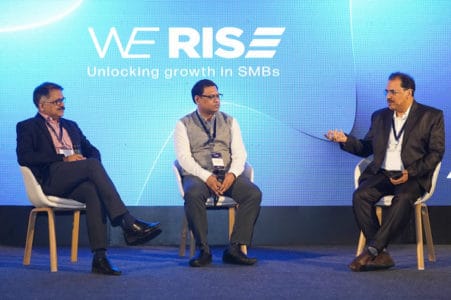Talking to Vikas Khanvelkar Director of DesignTech Systems
B. Swaminathan
The most apparent cost-cutting measure car manufacturers take is eliminating the less used component. And what’s better than the spare tire that the cars come with? Also, do remember the component should hamper the reliability or performance of the vehicle. So, the company saves big and gains a lot with a space-saver tire. In the automotive industry, it is worth paying special attention to the supply chain. Optimization of supply chain costs in the automotive industry is one of the basic steps to improve the financial results of our company. Today, it is not only quality materials and efficient transport that make a new product successful.
DesignTech Systems is a leading Engineering Service, including CAD / CAE providers from India. Based out of Pune, India, DesignTech specializes in providing mechanical engineering and product design analysis services, including CAD and CAE Services, to companies from cross-vertical domains.
In a chat with CMR, Vikas Khanvelkar, Director of the company, speaks on how the auto industry is cutting costs.
Q1. A research report says most auto companies hold maximum investments in research, development, and design specifications. This is, at times, even higher than the manufacturing cost. How true it is and explain to us the real picture.
Ans. Yes, this is true. Auto companies have to continuously carry out extensive R& D and design to ensure that their products will always enjoy a competitive edge above competition. All competitors are racing to stay ahead in product development. Over the last 24 years, product development cycle time has reduced from almost 36 months to less than 12 months for the development of new platforms.
At the same time, the product’s lifetime is also decreasing, e.g., Maruti 800 survived for 20 years as against, whereas the first generation Alto lasted for 12-15 years. Going ahead, this lifetime will keep reducing for all the Auto Manufacturers. These factors necessitate voluminous investments in R&D and Design activities.
Q2. With the changing lifestyles in Indian households and the way businesses are functioning, we see the formats of the vehicles changing for both consumer and enterprise vehicles. How much is the Indian auto sector becoming tech-driven?
Ans. Technology is the major driving force for Auto Industry Worldwide, so the globalization of the Indian Auto Industry cannot be isolated from the global market conditions. The New models have been launched in India simultaneously with other developed countries anywhere in the world.
This means the role of technology is very key to remaining globally competitive. Consumer preferences and expectations of Indian private and business customers are the same as their Global counterparts except that most Indian Market is cost conscious. But at the same time, they will not sacrifice functionality to save costs.
Q3. How is the scarcity of skilled labor in India with respect to the automotive sector? Do you think, any impact on companies adopting new avenues like robotics or artificial intelligence (at the production stage)?
Ans. To control the cost of production to maintain consistency in quality and productivity, the use of Robotics and Automation is a must. Indian Auto Companies also deploy all the State of Art manufacturing machines and Automation technologies like their global counterparts.
Hence this Manufacturing is not so much dependent on skilled labor like earlier days. The requirement of manpower on the shop floor has reduced to 25% or lower as compared to the earlier set-ups. The skills required from labor have also now changed, and the conventional rules have changed to new roles that can use the latest technologies.
Q4. On One side, customer demands are high to provide high features without increasing cost. On the other hand, suppliers also find it hard to stay relevant to the changing demands. As an industry veteran, what are your solutions for design-driven cost reductions?
Ans. Design-driven cost reductions are now called “Value Engineering” Simulation techniques are used to redesign the parts to give better performance with reduced weight. The use of alternative materials like composites and fiber-reinforced materials are explored. These factors enable Value Engineering to reduce costs and keep the features and performance the same.
Q5. The auto industry has been one of the most highly transforming sectors in recent years. What is your take on the standards of education in the auto industry? Do you think it will prepare future auto professionals?
Ans. Auto Companies invest a lot in the training and education of their employees. They are preparing future Auto professionals.
Q6. How is 3D printing taking the forefront among auto manufacturers, and how do you predict the growth in the coming financial year?
Ans. Auto Manufacturing involves mass Manufacturing, for which 3D printing is not suitable. In the Automotive field, 3D printing is used for the following applications.
- Jig and fixtures
- Tooling
- Prototypes for communicating Design Intent.
- Functional parts for fit form testing and trials.













